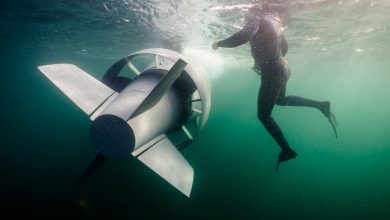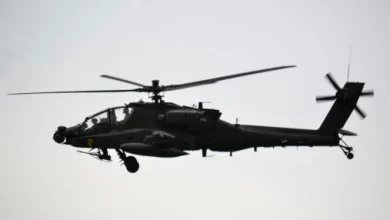Suriye’de rejim karşıtı muhalifler nasıl kazandı?

Devrik lider Beşşar Esed’in Baas rejimi büyük bir uluslararası komplonun kurbanı olarak türlü entrika ve gizli planların neticesinde çökmedi, tam tersine rejim o entrika ve planlar sayesinde bu kadar uzun süre var olabildi.
Bazen en doğru olan açıklama en sade olandır. Esed rejimi Suriye’de kaybetti çünkü zayıftı. Muhalifler kazandılar çünkü güçlüydüler. Suriye’de salt dış destek ve şiddet yoluyla ayakta durabilen o baskı rejimi elbet bir gün devrilecekti. Bilinmeyen ise bunun ne zaman olacağıydı. Devrik lider Beşşar Esed’in Baas rejimi büyük bir uluslararası komplonun kurbanı olarak türlü entrika ve gizli planların neticesinde çökmedi, tam tersine rejim o entrika ve planlar sayesinde bu kadar uzun süre var olabildi.
Muhalifler nasıl başarılı oldu?
Son iki haftada yaşananlara gelirsek, muhaliflerin gücü nereden geliyordu? Muhaliflerin belki savaş uçakları yoktu ama yoğun nüfuslu şehirleri düşürmeye yetecek, eş zamanlı operasyonlar düzenleyebilecek sayıda ve nitelikte savaşçıları vardı. Muhalifler sadece sayı, teknik ve beceri açısından değil, savaşma azmi bakımından da daha motive, daha kararlıydı. Çok sayıda, iyi eğitilmiş, savaşma iradesi yüksek bir güç başarı için elbette önemli ama yine de çok parçalı bir yapıda bu başarı mümkün olmayabilirdi. Nitekim, Heyet Tahrir Şam lideri Muhammed Colani, 6 Aralık’ta CNN’e verdiği röportajda, muhaliflerin 2016 öncesindeki başarısızlığını rejime karşı direnen güçlerin çok parçalı ve birbirinden izole olmasına bağladı. Bu sefer o hata tekrar edilmedi. Tek bir merkezden komuta edilen, organizasyon kabiliyeti yüksek bir harekat izledik.
Esed’in savaş lordlarından müteşekkil komuta kademesi emrinde, hiper enflasyon altında “bu maaşa savaşılmaz” diyen askerleri ise bu karşılaşmanın zayıf olan tarafıydı. Aslında bu durum 2016 öncesinde de benzerdi. O gün de muhalifler rejimi devirmeye yaklaşmıştı, ancak o dönem rejimin boşalttığı alanları DEAŞ ve PKK/YPG gibi terör örgütleri doldurarak cephe güvenliğini ortadan kaldırmışlardı. Öte yandan Rus hava saldırıları ile karadaki Wagner operasyonları, İran’ın bölgeye taşıdığı askerleri ve çeşitli ülkelerden topladığı mezhepçi milislerin oluşturduğu sayısı 10 binleri bulan bir kara gücü, o gün için mücadelenin kaybedilmesine yol açmıştı.
2016’da Halep’in İran ve Rus güçlerince muhaliflerden geri alınması sonrasındaki süreçte muhalif gruplar uzun süre İdlib’de sıkıştı. Yer yer yine Rusya ve İran destekli harekatlarla imha teşebbüslerine ise Türkiye, Astana süreciyle sağladığı diplomatik koruma ve 2020’de bölgede kullanmaktan çekinmediği askeri gücüyle izin vermedi. Günün sonunda ne etkin ve profesyonel bir orduya ne de halk desteğine sahip olan Esed rejimi Rus ve İran desteğinin zayıfladığı bir konjonktürde kolaylıkla sökülüp atıldı.
Neden şimdi?
Esed’in bu sefer kuvvetli bir Rusya ve İran desteği alamaması entegre bir uluslararası planın parçaları olarak görülmemeli. İsrail, Hizbullah’ı Suriye’deki muhalifler rejimi devirsin diye yıpratmadı. Ukrayna, Rusya’ya Şam düşsün diye direnmedi. Sadece tüm bu taraflar kendi çıkarları için mücadele edip kaynaklarını tüketirken ortaya çıkan konjonktür İdlib’teki muhaliflerin harekete geçmesi için doğru zamanı getirdi. Kısacası, Rusya ve İran’ı Suriye sahasında zayıflatabilecek bir konjonktür er veya geç oluşacaktı.
İran için düşünecek olursak, Tahran’ın son bir yıldır yaşadığı kayıplar olmasaydı bile seçilmiş Amerika Birleşik Devletleri (ABD) Başkanı Donald Trump’ın İran’a karşı takip edeceğini söylediği “azami baskı” politikası İran’ı önümüzdeki süreçte gerilemek zorunda bırakacaktı. Bunlar çok daha önce de olabilirdi. Örneğin, Batı dünyası Ukrayna’yı 2022’de başlayan Rus saldırısıyla değil, 2014’te Kırım’ın ilhak edilmesiyle desteklemeye başlasaydı belki de Ruslar 2015’de Suriye sahasına konuşlanmayı düşünmeyecekti.
İran ve Rusya’nın Suriye sahasındaki varlığının ne zaman zayıflayacağı HTŞ’nin kontrolünde olmayan bir değişkendi. Muhaliflere düşen ise o gün geldiğinde bu harekat için hazır olmaktı. HTŞ muhalif oluşumlar içinde bu hazırlığı yapan taraf oldu. HTŞ, Halep’in rejim kontrolüne geçmesinden sonraki 8 yıllık süreçte İdlib’teki diğer muhalif oluşumlardan ya biat aldı ya da onları tasfiye etti. Böylece bütünleşik bir emir-komuta zinciri oluştu, muhalif kanat içinde oluşabilecek çatışmaların önüne geçildi.
HTŞ adım adım ilerledi
HTŞ öncülüğündeki muhaliflerin Şam’ı 12 günde düşürmesinin askeri stratejisi de iyi kurgulandı. Suriye’de şehirler üç dikey hat üzerine kuruludur. Bunlardan ilki Akdeniz kenarındaki Lazkiye-Tartus hattıdır. M4-M5 karayolu ile kuzeyden güneye birbirine bağlanan Halep-Hama-Humus-Şam hattı ikincisidir. Üçüncüsü ise Fırat havzasındaki Rakka-Deyrizor hattıdır. Muhalifler ortada yer alan ikinci hat üzerinde kuzeyden güneye adeta bir ok gibi ilerlediler. Bu süratli ilerlemenin Şam ile Lazkiye-Tartus hattını savunacak rejim güçlerini demoralize ettiği ayrıca Rusya ve İran’ı da kapsamlı bir karşı saldırının başarı şansı ve maliyeti konusunda karamsar senaryolara hapsettiği görülüyor.
Ayrıca unutmayalım, HTŞ bu askeri başarıyı elde ederken yumuşak güç faktörünü de ihmal etmedi. HTŞ, 8 yıllık hazırlık sürecinde İdlib’in kapılarını yardım kuruluşlarına açtı, uluslararası medya nazarında kapalı bir toplum, despotik bir idare imajı vermedi. HTŞ, özellikle Türkiye ile ilişkilerine riayet etti, uluslararası kuruluşlar aracılığıyla gelen insani yardımı buraya aktarabilecek ve İdlib’i saldırılardan koruyabilecek tek aktör olan Türkiye’yi karşısına almamaya özen gösterdi. Tüm bunlar söz konusu başarının salt askeri bir başarı değil, aynı zamanda bir diplomasi ve stratejik iletişim başarısı olduğunu da ortaya koyuyor. Nitekim muhalif hareketin lideri olan Colani, bugünlerde kapsayıcı kurumlar, katılımcı yönetim, dini hoşgörü mesajlarını dünyaya duyururken dünyayı anlayan, geçmişteki hatalardan ders çıkarabilen, iyi bir siyasetçi olduğunu da ortaya koydu.
Suriye’de eli kanlı bir diktatörlüğün devrilmesi zaten mutlu olmak için başlı başına yeterli sebep. Suriye’de bundan sonra ne olur, Colani, Şam’ı devirirken sağladığı birlikteliği Şam’ı yönetirken de muhafaza edebilir mi, HTŞ müstakil varlığını sürdürür mü, zaman gösterecek. Ancak muhaliflerin İdlib’deki 8 yıllık yönetim tecrübesi, o sıkışmışlığa rağmen neredeyse tüm Suriye’de halk desteğini arkasına alabilmesi, birleşik ve bütünleşik bir Suriye’de istikrarlı bir yönetim kurulabilmesi adına olumlu göstergelerdir.
Kaynak: AA / Doç. Dr. Hüseyin Alptekin





